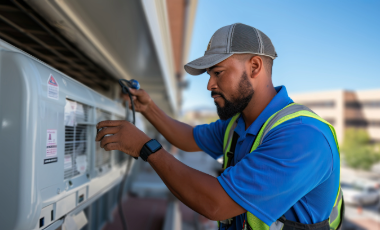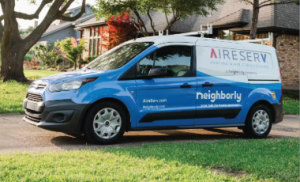Introduction to HVAC Solutions in the Bay Area
The Bay Area is known for its mild climate, but that doesn’t mean residents and businesses can overlook the importance of efficient HVAC (Heating, Ventilation, and Air Conditioning) systems. With rising energy costs and increasing concerns about environmental sustainability, it is crucial to explore efficient HVAC solutions that can help save energy and reduce carbon footprint. In this article, we will delve into the various energy-efficient HVAC systems available for residential properties and commercial buildings in the Bay Area. We will also discuss the benefits of implementing these solutions and how they can positively impact both homeowners and businesses.
Energy-Efficient HVAC Systems for Residential Properties
Residential properties in the Bay Area can greatly benefit from energy-efficient HVAC systems. One popular option is the installation of a high-efficiency heat pump. Heat pumps are capable of both heating and cooling a home, making them versatile and cost-effective. According to the U.S. Department of Energy, heat pumps can reduce electricity use by up to 50% compared to traditional heating and cooling systems. This translates to significant energy savings for homeowners.
Another energy-efficient HVAC solution for residential properties is the use of programmable thermostats. These thermostats allow homeowners to set different temperature schedules throughout the day, ensuring that the HVAC system operates only when needed. By optimizing temperature settings, homeowners can save up to 10% on their annual heating and cooling costs, as reported by the Environmental Protection Agency (EPA).
Furthermore, proper insulation and sealing of ductwork are essential for maximizing HVAC efficiency in residential properties. Leaky ducts can result in significant energy losses, reducing the overall efficiency of the system. By sealing and insulating ducts, homeowners can prevent air leaks and ensure that conditioned air reaches its intended destination, reducing energy waste and improving comfort.
Optimizing HVAC Efficiency in Commercial Buildings
Commercial buildings in the Bay Area face unique challenges when it comes to HVAC efficiency. These buildings often have larger spaces and higher occupancy rates, requiring more robust HVAC systems. However, there are several strategies that can be employed to optimize efficiency.
One effective solution is the use of variable refrigerant flow (VRF) systems. VRF systems allow for individual control of temperature in different zones of a building, ensuring that energy is only used where and when it is needed. This zoning capability can result in significant energy savings, as reported by the Pacific Gas and Electric Company (PG&E). Additionally, VRF systems are known for their quiet operation and precise temperature control, enhancing comfort for building occupants.
Another strategy for improving HVAC efficiency in commercial buildings is the implementation of demand-controlled ventilation (DCV). DCV systems monitor carbon dioxide levels in the building and adjust ventilation rates accordingly. By providing fresh air only when necessary, DCV systems can reduce energy consumption and improve indoor air quality. According to the U.S. Green Building Council, implementing DCV can result in energy savings of up to 20% in commercial buildings.
Benefits of Implementing Efficient HVAC Solutions in the Bay Area
Implementing efficient HVAC solutions in the Bay Area offers numerous benefits for both homeowners and businesses. Firstly, energy-efficient HVAC systems can significantly reduce energy consumption, leading to lower utility bills. According to the EPA, homeowners can save an average of 15% on heating and cooling costs by upgrading to energy-efficient systems. For businesses, the savings can be even more substantial, especially in large commercial buildings.
Moreover, efficient HVAC solutions contribute to environmental sustainability by reducing carbon emissions. The Bay Area has been at the forefront of environmental initiatives, and implementing energy-efficient HVAC systems aligns with the region’s commitment to reducing greenhouse gas emissions. According to the U.S. Energy Information Administration, residential and commercial buildings account for 40% of total energy consumption in the United States. By adopting efficient HVAC solutions, the Bay Area can make significant strides towards a greener future.
In addition to cost savings and environmental benefits, efficient HVAC systems also enhance comfort and indoor air quality. These systems provide consistent temperature control, improved humidity regulation, and better air filtration, creating a healthier and more comfortable living and working environment. This can lead to increased productivity in commercial buildings and improved overall well-being for homeowners.
In conclusion, efficient HVAC solutions are essential for homes and businesses in the Bay Area. By investing in energy-efficient systems, such as high-efficiency heat pumps and programmable thermostats for residential properties, and VRF systems and DCV for commercial buildings, both homeowners and businesses can enjoy significant energy savings, reduced carbon footprint, and improved comfort. The Bay Area’s commitment to sustainability and environmental stewardship makes the adoption of efficient HVAC solutions a crucial step towards a greener future.


